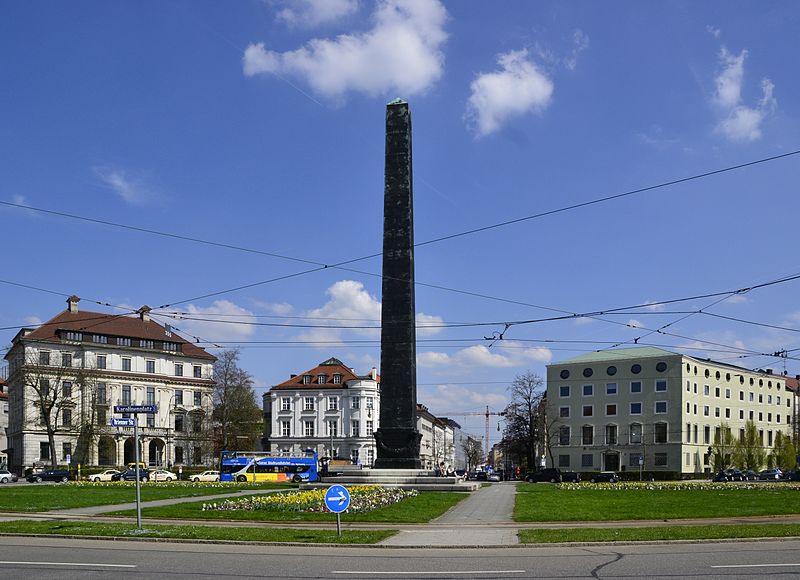
The Munich Obelisk in post Obelisk #22 is one of a series on ancient Egyptian Obelisks removed from Egypt. Many visitors to Munich are probably more impressed by the black obelisk in Karolinenplatz.
This was erected by 1933 by King Ludwig I to commemorate the 30,000 Bavarian soldiers who were serving under Napoleon in his 1812 invasion of Russia. Before he was King Ludwig he was Crown Prince Maximilian the son of King Maximilian I. Crown Prince Max never agreed with King Max’s decision to join the confederation of the Rhine and serve with Napoleon. Crown Prince Max was distinctly anti-French.
He brought the Egyptian Obelisk home from Paris to celebrate his victory over the French at the Battle of Nations in Leipzig and the subsequent battles that deposed Napoleon. So the Egyptian Obelisk is a celebration of triumph. He erected the black obelisk as a memorial to the fallen Bavarians who never returned home. This dichotomy between triumph and remembrance is where I am taking this thread next.
Max may have objected to the stance adopted by his father, but he served the French loyally as a commander of the Bavarians. Upon the withdrawal of Bavaria from the Confederation of the Rhine he led his men against France under the Sixth Coalition. In this capacity he had every right to both celebrate the defeat of the French and the loss of life of Bavarian soldiers under the French.
We already saw the Italians repurpose the Dogali Obelisk to commemorate the Italian troops massacred in Eritrea in 1887. What intrigues me is how the monument form initially a religious expression, evolving to a triumphal war memorial eventually became such a commonly accepted motif for rembrance of the fallen and a symbol of the futility of war.
-=o0o=-
This site is available for free and I make no money from any ads you see here. If you would like to show your appreciation feel free to leave a comment or you can buy me a coffee! http://buymeacoffee.com/DonalClancy

